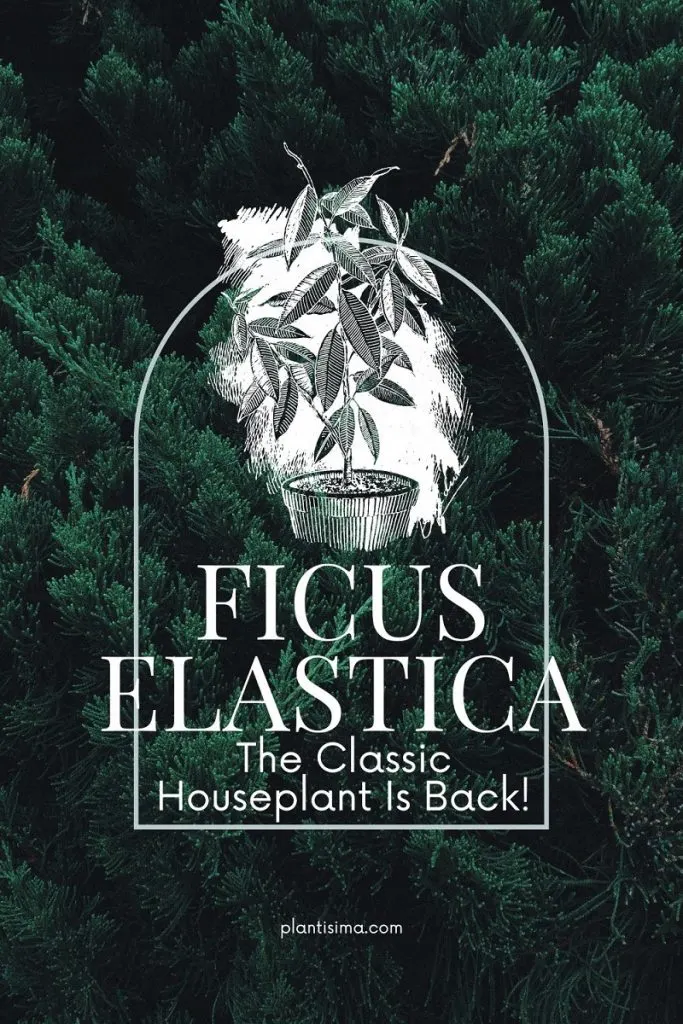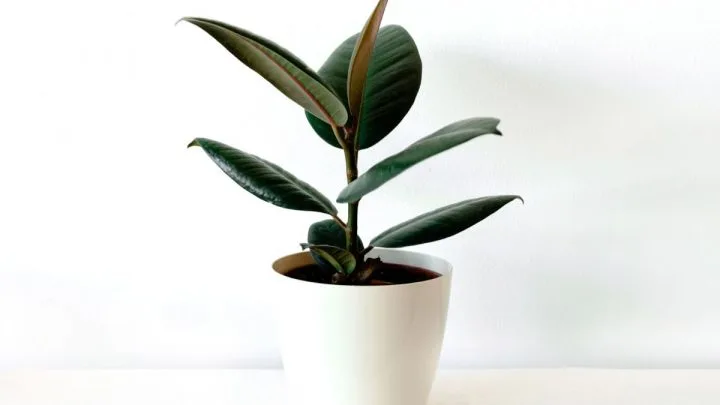The rubber tree (Ficus Elastica) is one of the most popular houseplants ever! This variety of the Ficus family is very popular as one of the most famous ficus plant types, not only for the living room but also for the office!
And, of course, this is not without reason, because this plant brings with it so many advantages, not just its beauty. Exactly about these advantages and properties, you will learn here!
In this article, you will find all the information about the rubber tree (Ficus Elastica) from its origin, the most important properties to the important care tips! You will also find interesting facts about the rubber tree as a little bonus!
Origin And Location Of The Rubber Tree Plant

The rubber tree is native to India and Indonesia. It looks quite different there than in our living room or office.
Because in the wild Nature, this variety of the Ficus genus belongs to real trees that reach an incredible height of 65 feet. Its trunk is also quite impressive with its width of around 6 feet and strong, thick, and coarse bark.
This variety of figs belongs to the mulberry family and nowadays this small tree is one of the classics as far as indoor plants are concerned.
Since the ’90s, the Indian rubber tree (Ficus Elastica) was considered one of the most beautiful and popular houseplants.
Especially in offices, these plants were often. After that, a different time came and other houseplants became more popular. However, as we can see on social media platforms, the rubber tree is back, and in a big way.
Indoor Rubber Plants: The Best Location In Your Own Four Walls

Because this houseplant is also found in tropical and subtropical areas, it loves the heat and warmth.
From that can be concluded that this green rubber plant also needs a warm and protected location in the room or the office.
Bright it can be quiet, but without direct sunlight. As for the light conditions, the only thing you should avoid in the location is the blazing sun (indirect light). It can be bright but without direct sunlight.
With direct sunlight (bright light), the leaves will dry faster and they can easily get a sunburn or you can get a leaf drop.
In winter, you should pay special attention to the plant and prepare comfortable temperatures for it, because the Ficus Elastica house plants are not hardy or frost-hardy.
The Most Important Features Of The Ficus Elastica Robusta

If you haven’t already discovered this amazing houseplant, then it’s about time! Here are the important features and characteristics of the rubber tree in a detailed description.
We are sure that this Rubber Plants species will also delight you and quickly end up in your shopping cart!
With our Tipps and information that we write, indoor gardening and new plants may be the right choice of entertainment for this summer.
Rubber Tree Houseplant: Growth Habit And Size
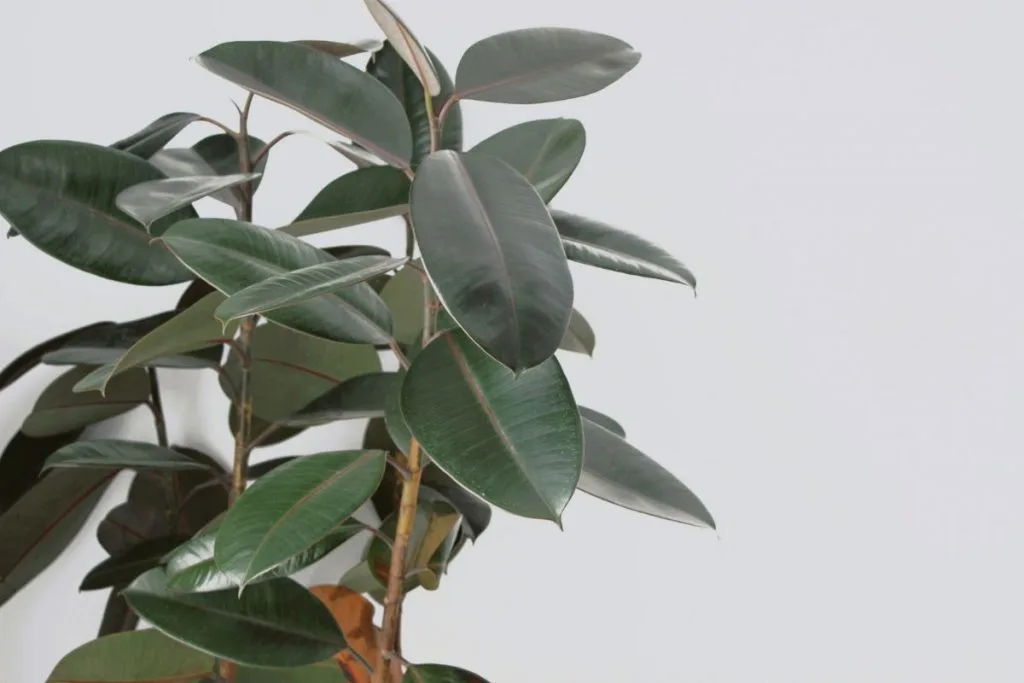
Rubber tree belongs to the category of the most beautiful indoor trees that you can have. Because it fits perfectly into the room with its upright and magnificent growth.
Ficus Elastica can reach a growth height of about 6 feet and a maximum width of 3 feet. But its height and width depend on what conditions are present and, of course, the size of the pot or container.
Leaves And Shade Of The Rubber Tree Plants
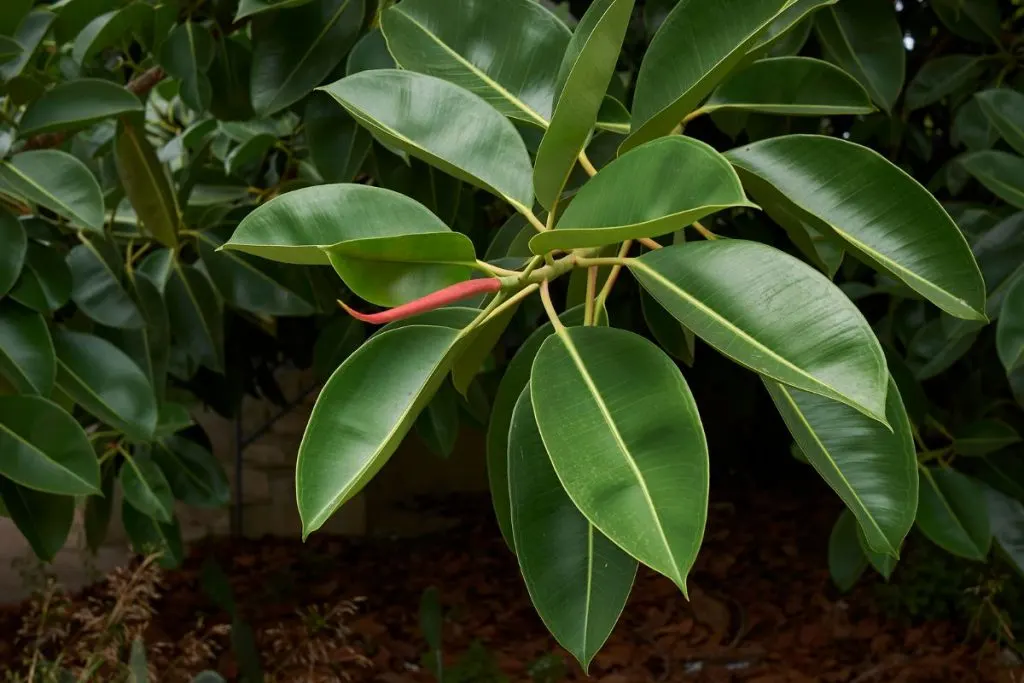
Of course, the leaves of this evergreen indoor plant are the highlight and the reason why this variety is so popular.
The new leaves and the bottom leaves can reach a size of about 12 inches and sometimes it becomes a few inches more in width.
The leaves are united with the stem by the approximately 2 inches long stems of the plant. These are in the same color as the stem, often in green color.
The large leaves can come in two color varieties. The first is a beautiful dark green type with a lighter lower side of the leaf.
The other color variation of the leaves is a mixture of a light yellow and dark green. This mixture gives a beautiful pattern to the leaves.
Thanks to the leaf texture, the Ficus Elastica also got its name. Because this strongly reminds me of real rubber.
The surface of the leaves is smooth and very shiny with a round leaf edge.
Another good question is why are rubber plant leaves drooping?
Does Ficus Elastica Flower?
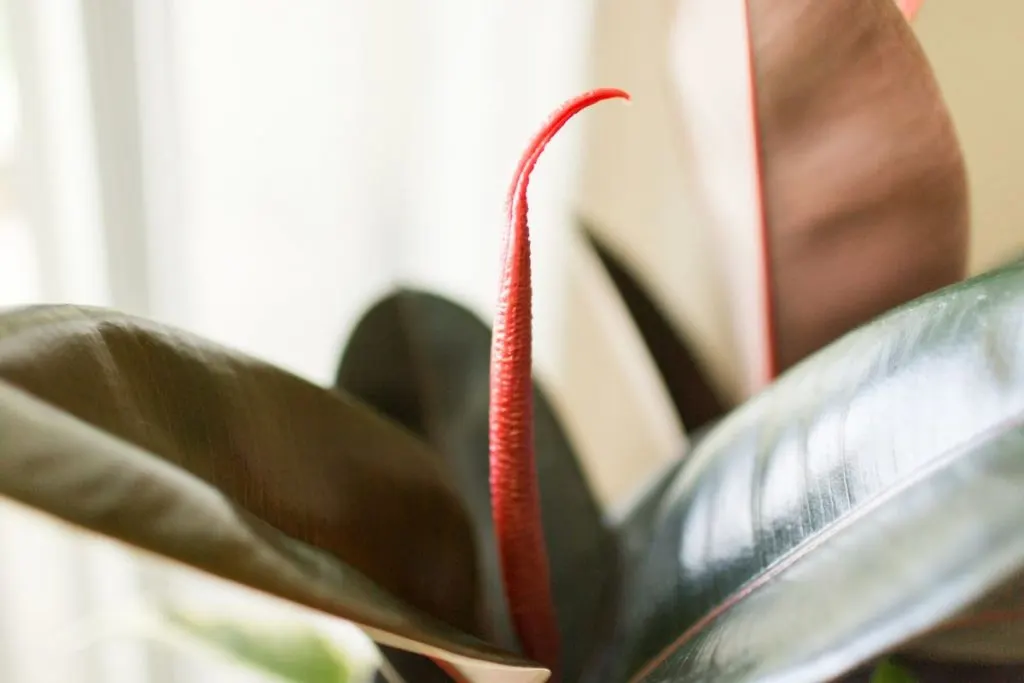
Yes, the Ficus Elastica (green type) develops beautiful flowers during its flowering period, but they are not fragrant flowers.
But this is only possible in the natural location, you can’t wait for the flower to bloom in your own four walls.
For the flowers to develop, the plant needs pollination by the “fig wasp”. But with this beauty, the beautiful leaves are more of a great eye-catcher.
Is The Ficus Elastica Poisonous?
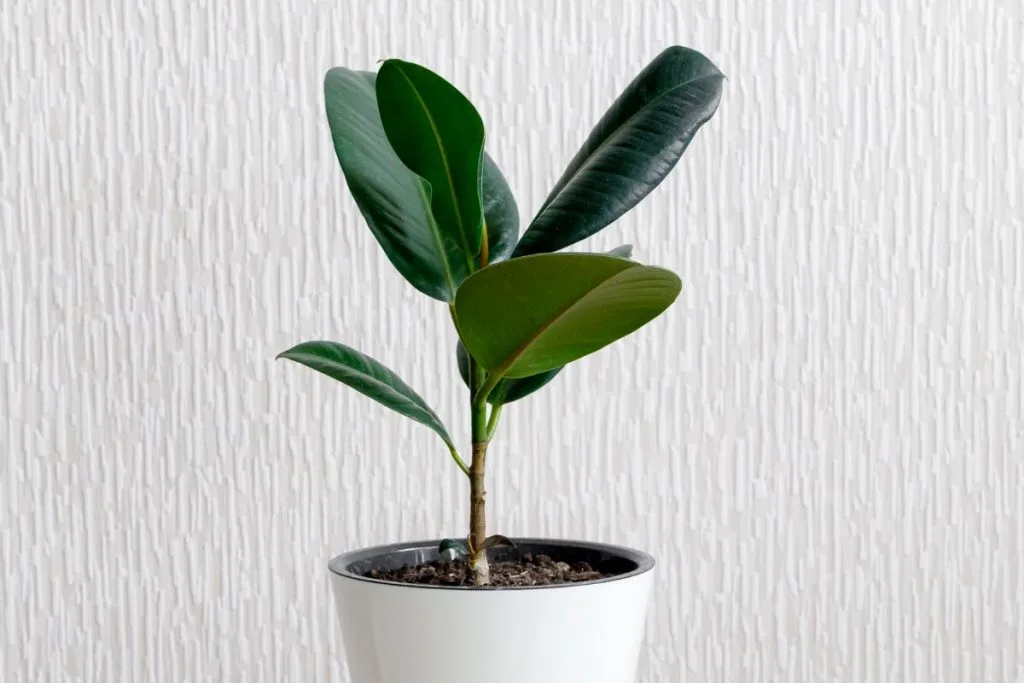
Yes, the Ficus Elastica is considered a poisonous plant because of the sap that is under the leaves and trunk. So if you have small children or pets, you should be careful with this plant.
Because the juice (latex) can be particularly dangerous for the animals. So if you are allergic to this substance, you should avoid this plant or be careful with it.
Rubber Plant Care: This Is How Your Ficus Elastica Will Always Stay Beautiful And Healthy!
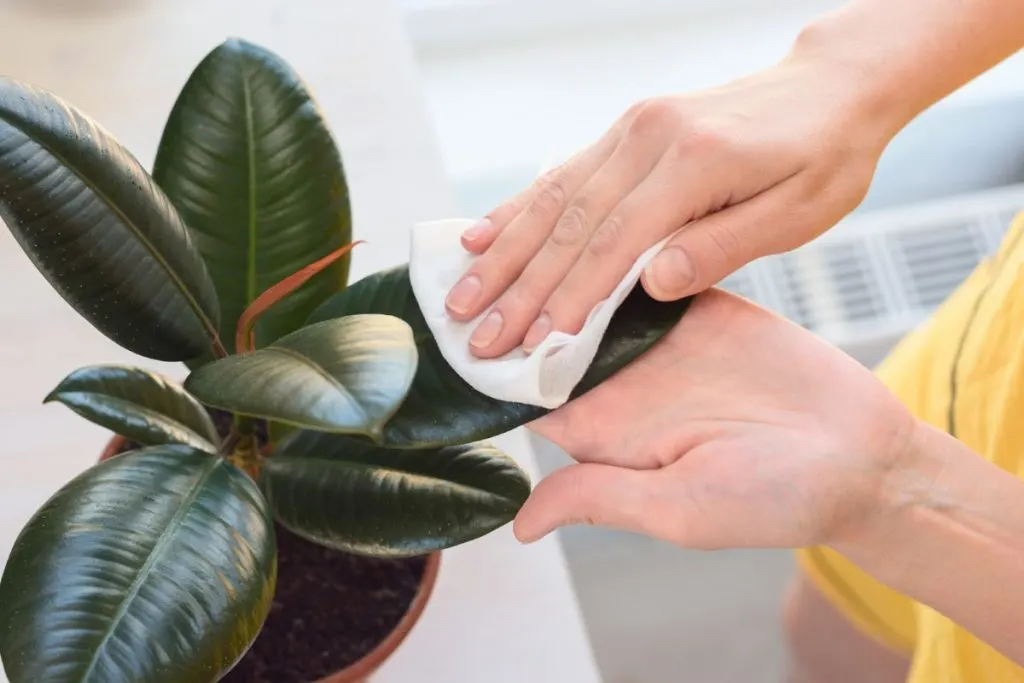
All house popular plants are something special, but the Rubber young plants with rubber bush and green leaves are something amazing.
This species is also affectionately called “Robusta” and not for nothing. Because this evergreen tree with glossy leaves can tolerate a lot and it will easily forgive mistakes in care during the growing season.
Here we will give you the best menu ficus elastica tips for caring for the rubber tree. This classic will decorate your living room or office for many years!
The Right Substrate For Your Rubber Tree
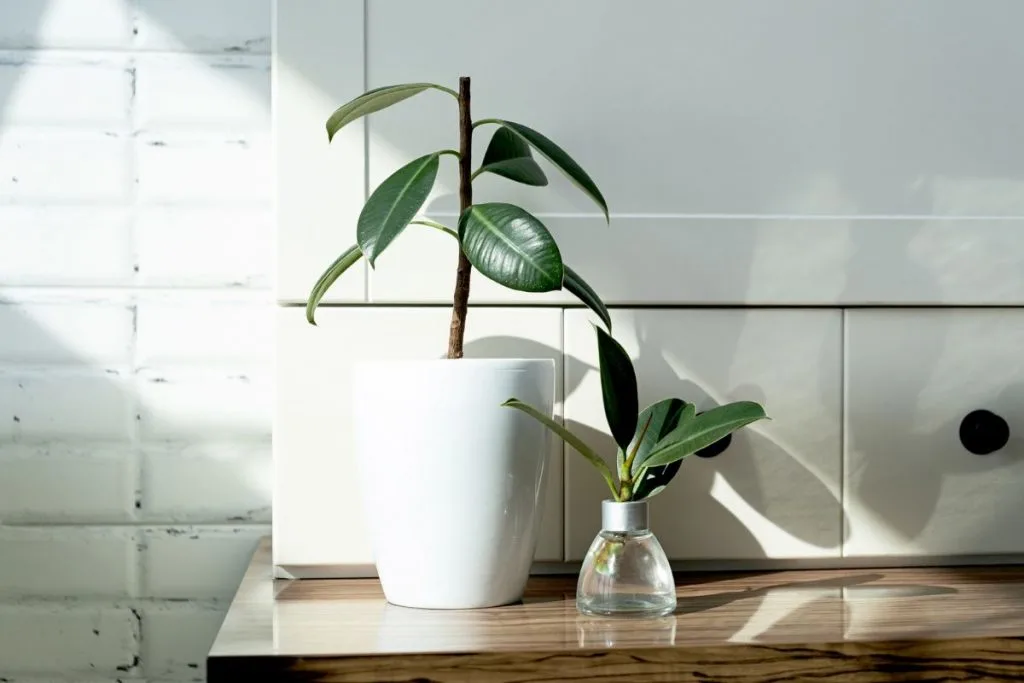
We have already mentioned that the rubber tree is an easy and uncomplicated houseplant that is very hardy. Here you should only keep a few things in mind with the substrate.
For the substrate, you can use a simple indoor plant substrate or potting soil. However, the drainage and permeability of the substrate are extremely important for the health and proper development of the plant without problems (so the leaves don’t turn yellow).
So mix a bit of sand under the substrate or put a layer of gravel in the pot before pouring the substrate in. This way the soil will be sufficiently permeable, waterlogging is avoided and there will be loose soil in the pot.
Because heavy soil and standing water in the pot inevitably lead to the formation of rot. This means that the roots of the rubber tree will rot quickly if there is too much water in the pot.
So, for this strain, the high water permeability of the substrate is really important for a plant that will be with you for many years. After that, you should also make sure that there are enough humus and nutrients in the substrate.
Especially in the growth phase, you should pay attention to these additives.
Watering The Rubber Tree: This Is How It’s Done!
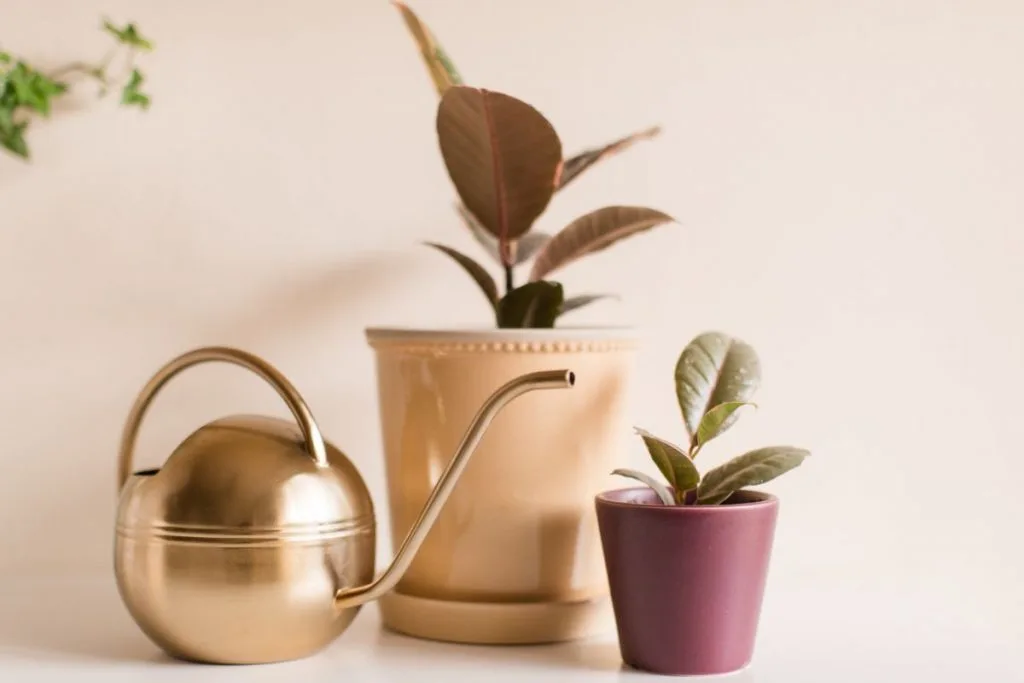
We have already learned that this plant does not like waterlogging, quite the opposite. The waterlogging in the pot can only cause great damage.
So always be careful with the watering, better too little than too much. Here’s a great trick to checking if your Ficus Elastica needs more water.
Stick a finger into the substrate, when the substrate is well dry on the surface, then you can water it. But if the substrate is damp, please wait with watering.
With this plant, you can use water that is low in lime, i.e. rainwater or stagnant water, or normal tap water. For the rubber tree, it makes no difference.
Fertilize Rubber Trees: How Often And How Much?

Fertilizing during the growth phase is very important because then the plant needs a lot more nutrients. So, enrich the substrate every 2 weeks from spring, April to September with normal liquid fertilizer.
When the plant is mature and has reached the desired growth height, you can start fertilizing every few months. This plant is completely content with the right location(low light) and the right amount of water.
But a little kick in the substrate won’t hurt. Especially when you notice that the color of the leaves is fading a bit.
Repot Rubber Trees: When Is The Right Time For Repotting?
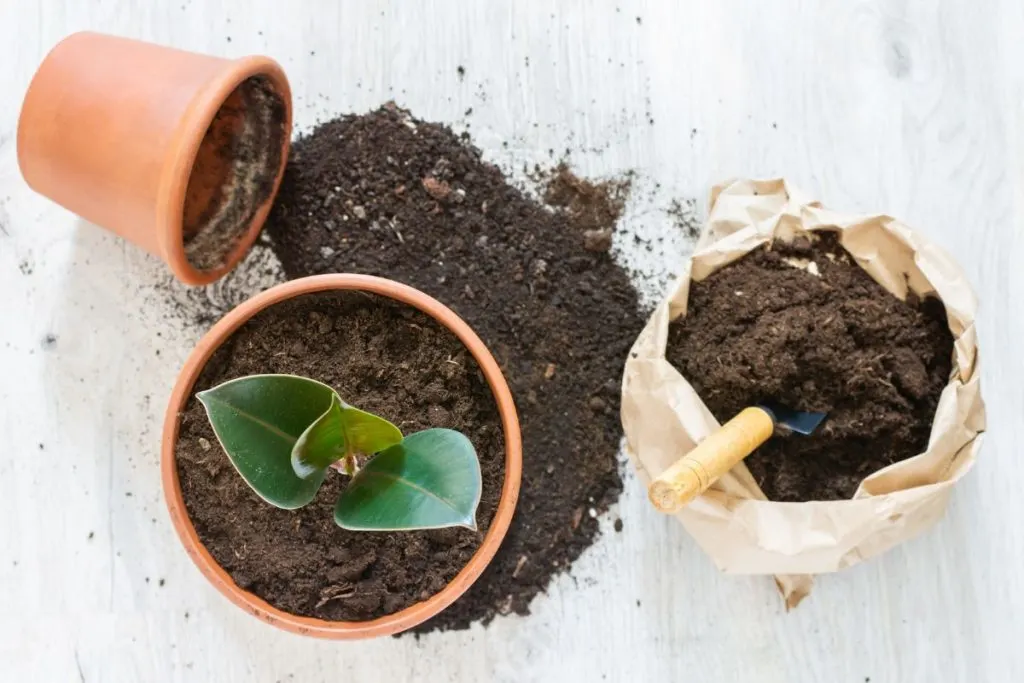
Rubber trees differ from other larger plants in this respect. Because of these strains, it can be said that they prefer to be cultivated in a narrow space that does not have much free space.
But there comes a time when you should do the repotting. When you notice that the root ball has spread so wide that there is almost no space left in the pot, then it’s time to repot the plant.
It would be the best option if you do this in the spring. Prepare the new pot with the right humus, rich substrate, and a good layer of gravel or sand for proper drainage.
Make sure that the new pot always has a drainage hole, this is important. Then you should carefully remove the plant from the old pot.
It helps to dip the plant in the water so that the excess soil can be more easily detached from the root ball. Then simply place the plant in the new planter and cover it well with the new soil.
Then just water well and the repotting is complete. We see that the Ficus Elastica does not have any special requirements here either and this is exactly why this plant is considered easy to care for.
Should I Prune My Rubber Plant?

That’s up to you because the Ficus Elastica makes a wonderful cut plant and again, it’s simple. You can always cut your houseplant if you are not completely satisfied with the growth form.
Another reason for pruning the plant is the height it has reached. So you can always adjust the growth height of the plant to your preferences.
After that, you can also cut off the leaves that have died or turned brown. In this way, you will make the plant look more beautiful and free it from unnecessary ballast.
For cutting you should have two things:
- A pair of sharp scissors or a sharp knife
- gloves
The gloves are especially important because of the sap that will get on the plant when you cut it. You can shorten the main shoot according to your preferences and ideas to achieve the desired height.
Or you can cut back the side shoots for the right growth form of the plant. You can use the cut shoots as cuttings and enrich and beautify the pot even more.
The Ficus Elastica can also be propagated from these cut-off parts of the plant. It’s that easy to support this small tree and bring it to the desired height and shape.
But here you should make sure that you only cut back a mature plant and not a young plant. So you can only think about pruning the Ficus Elastica after about 3 to 4 years.
More Great Rubber Tree Care Tips!
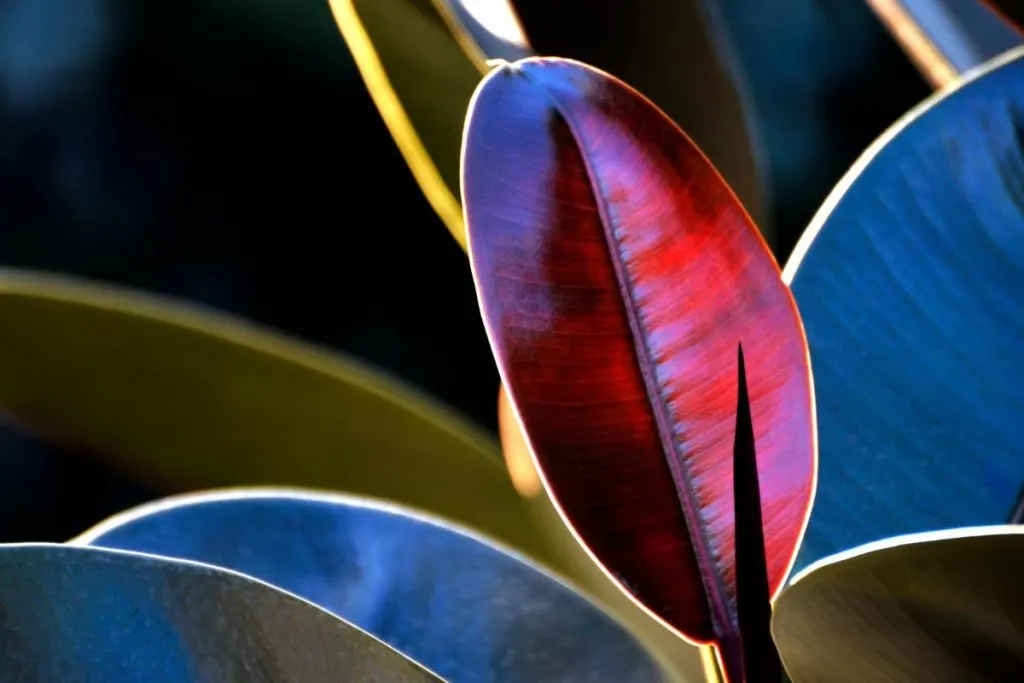
– These plants love high humidity, you should spray the plants regularly with soft, lime-free water. Because in this way the leaves will always remain shiny, with a rich and fresh color!
– Always wipe the leaves with a soft and slightly damp cloth. This is how you will intensify the shine and free the plant from annoying dust.
– Avoid drafts with the Ficus Elastica, because the leaves, as well as the whole plant, will only be damaged. So look for a sheltered and warm place.
– The Ficus Elastica is not hardy, so you should pay attention to a temperature of at least 60 F in winter.
– Because the Ficus Elastica loves humidity, it can also be placed in the bathroom as a great bathroom plant. Or even if you notice that your plant needs more humidity, then this trick is simply perfect, especially in winter with the stuffy air from the heating.
– When it’s finally warm outside and the temperatures have risen above 70 F, you can also place the plant outside on the balcony or terrace. The Ficus Elastica will feel particularly comfortable there because the warmer it is, the more beautiful and richer the color of the leaves.
5 Interesting Facts About The Ficus Elastica
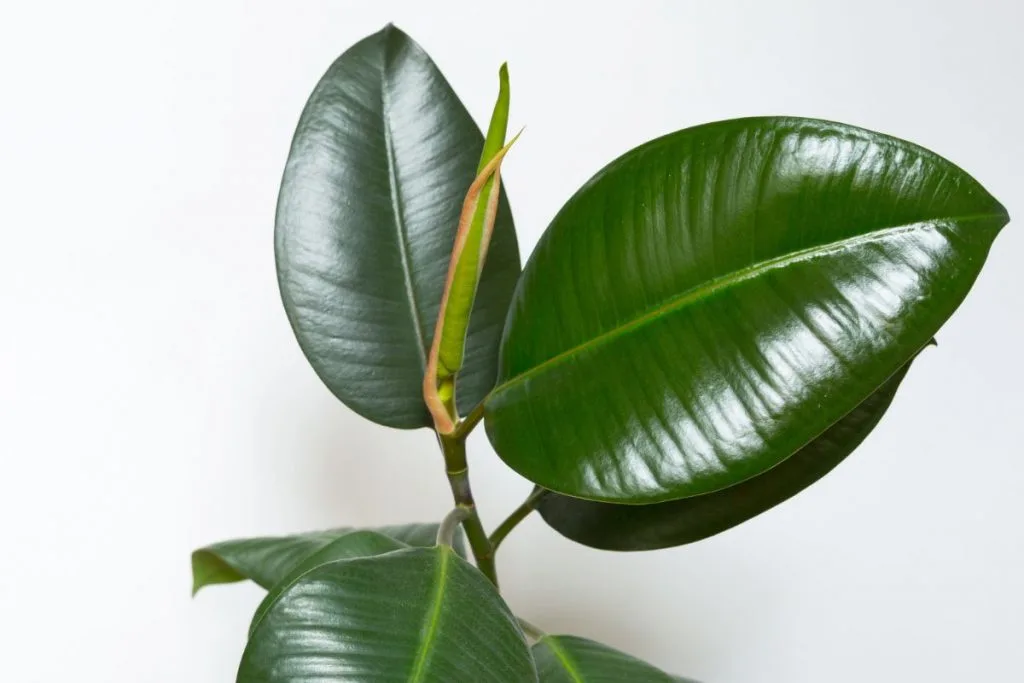
We have certainly already convinced you of the beauty of this plant. But a few fun facts won’t hurt! Here you will find the most interesting facts about the rubber tree in a nutshell.
- The Ficus Elastica is one of the best indoor plants for fresh air! Because this plant can absorb and filter the pollutants from the air. This will bring more oxygen into the room. So, the best pollutant filter is in the pot!
- The rubber tree has this name not only because of its leaves but also because of the milky sap and sticky liquid that is found under the bark. This is exactly what rubber or latex is made of in some countries.
- The rubber tree also has a special symbolism. Because this tree stands for wealth and luck, this small tree variety is also great as a gift!
- You can also keep the rubber tree as a hydroponic plant!
